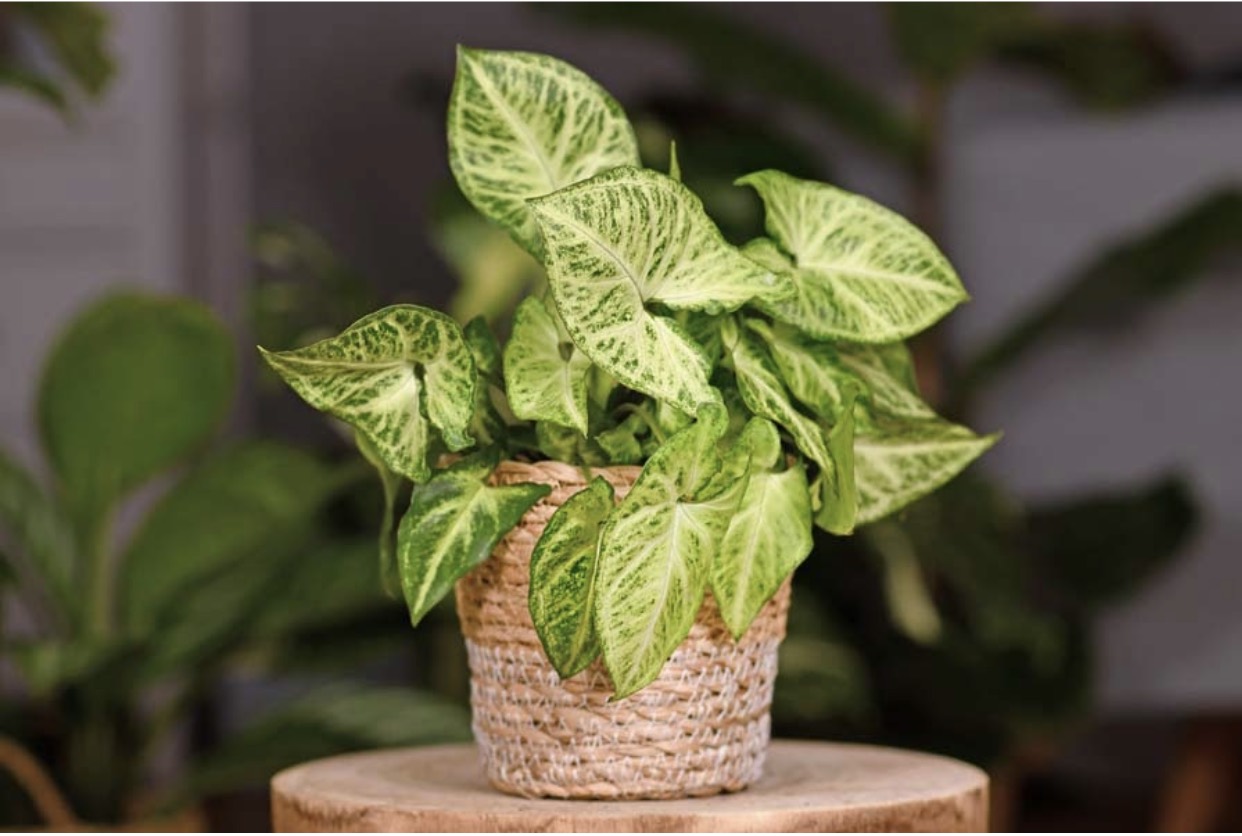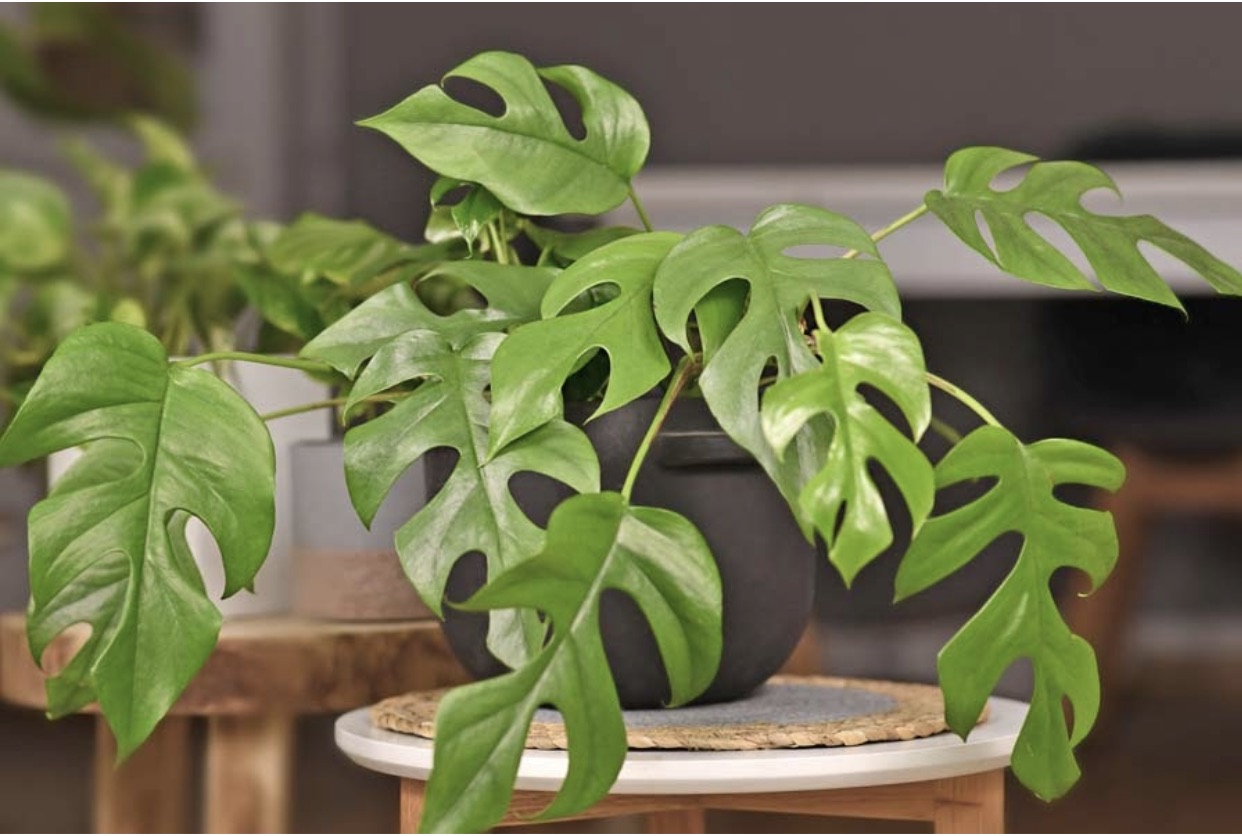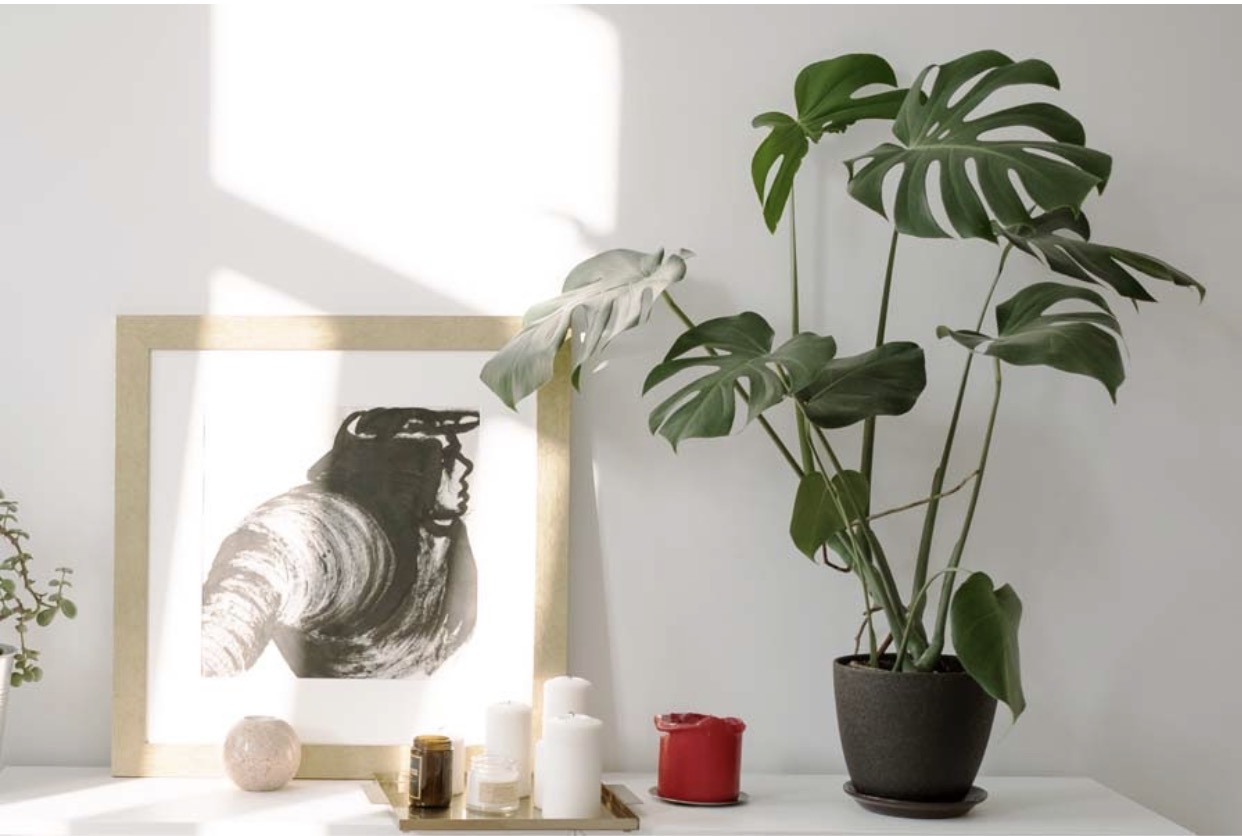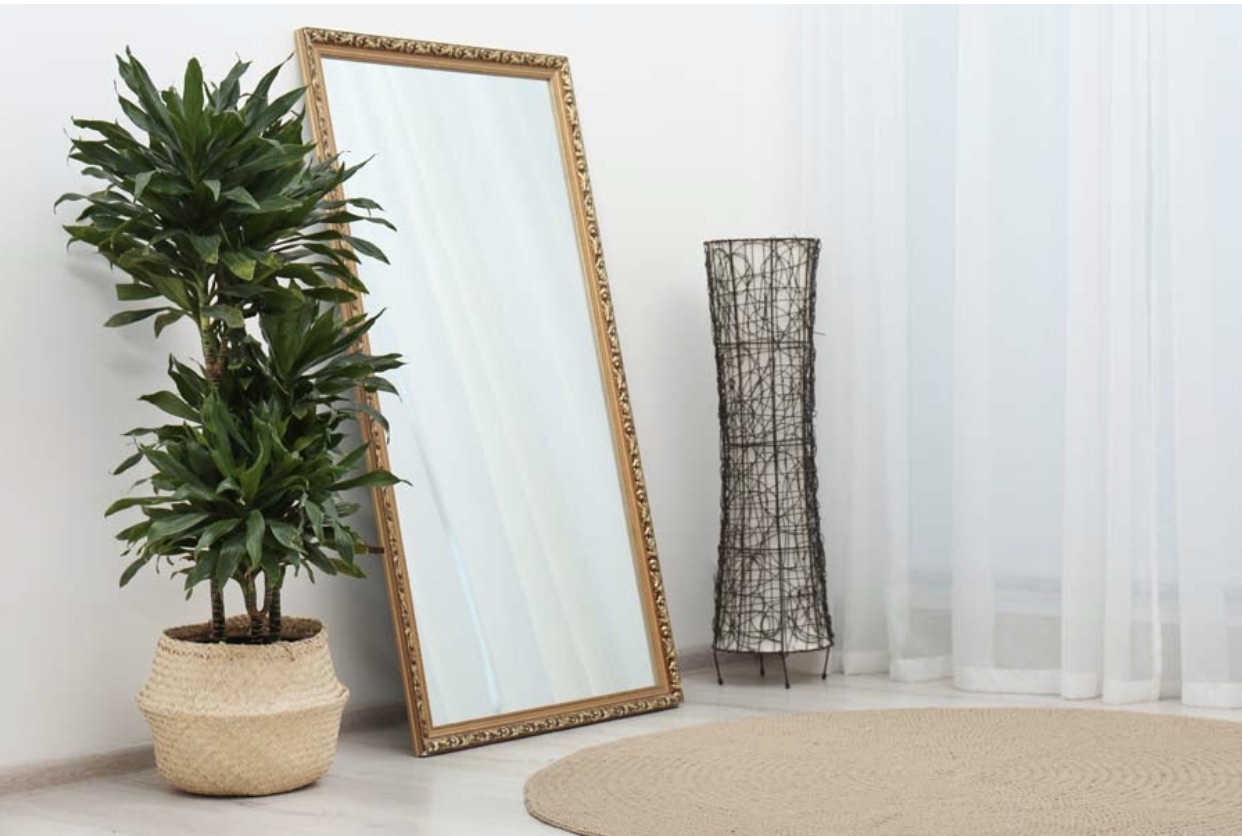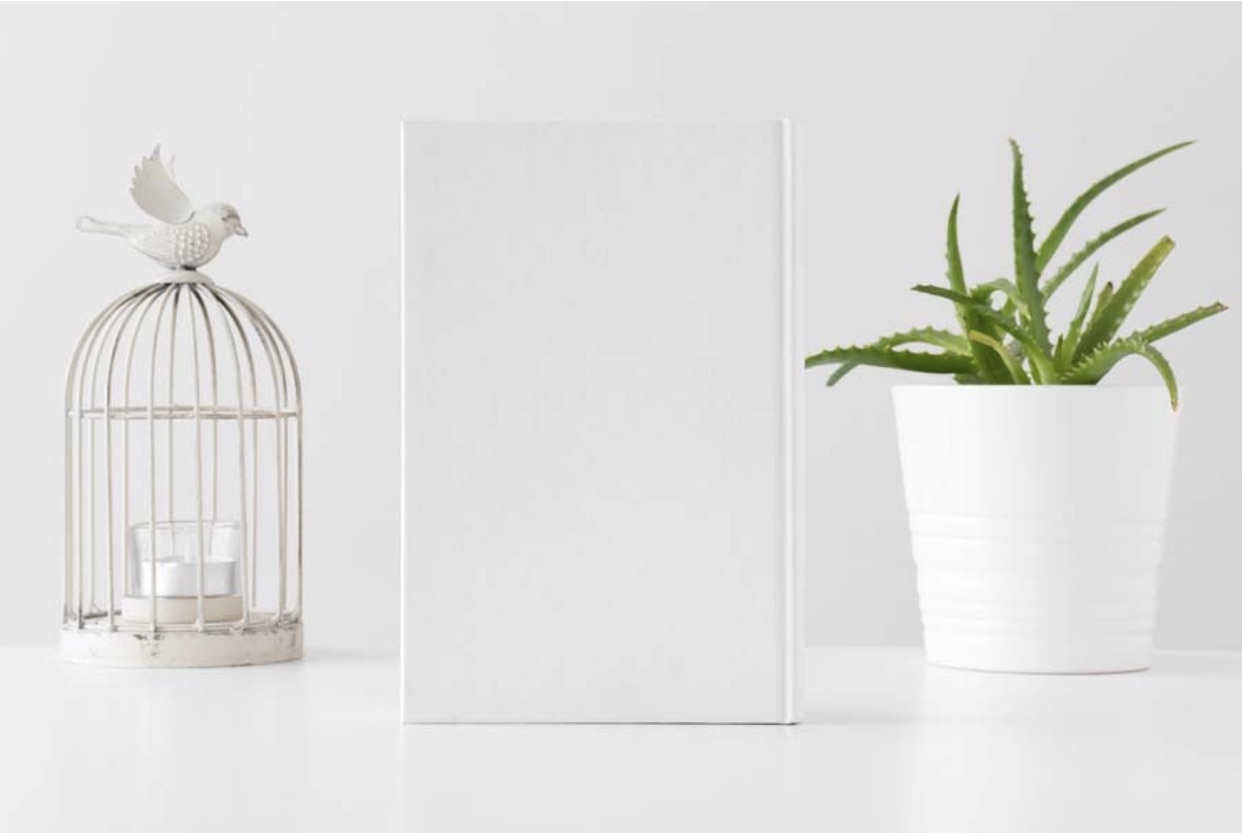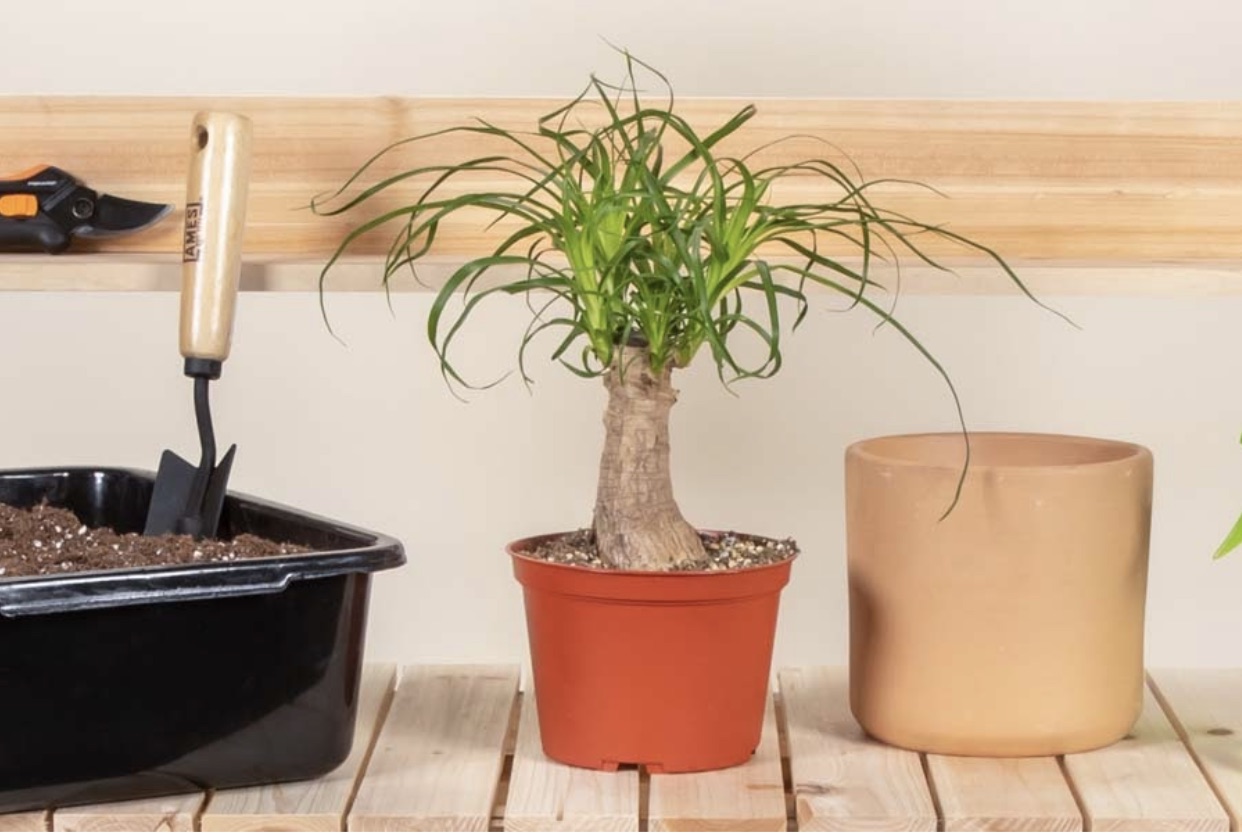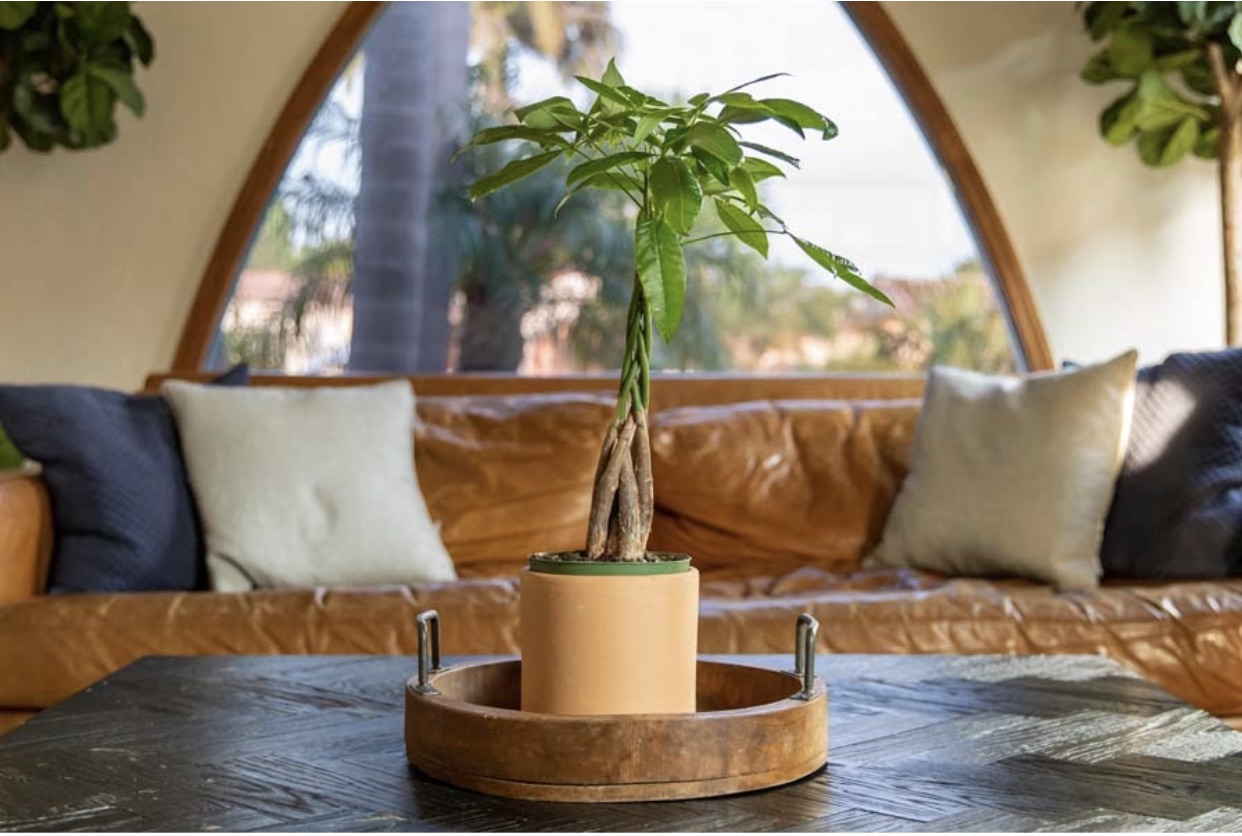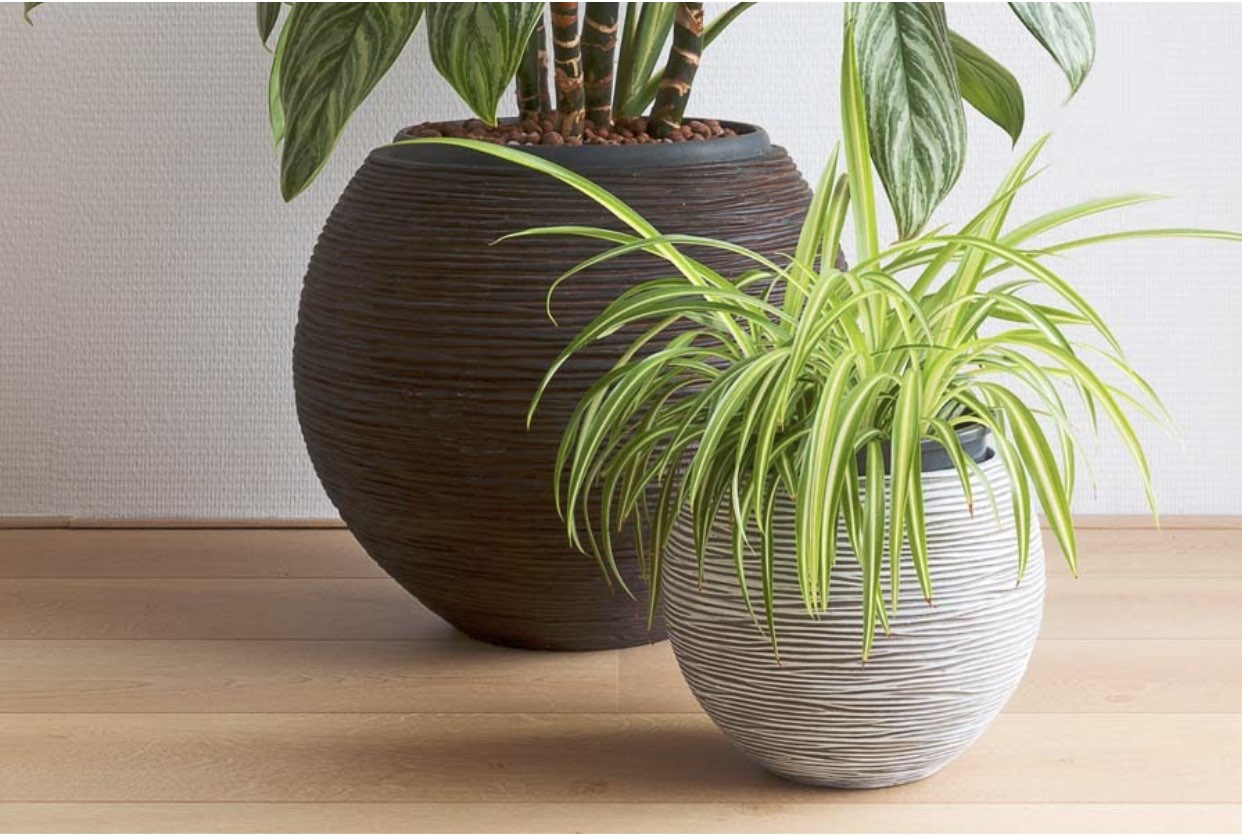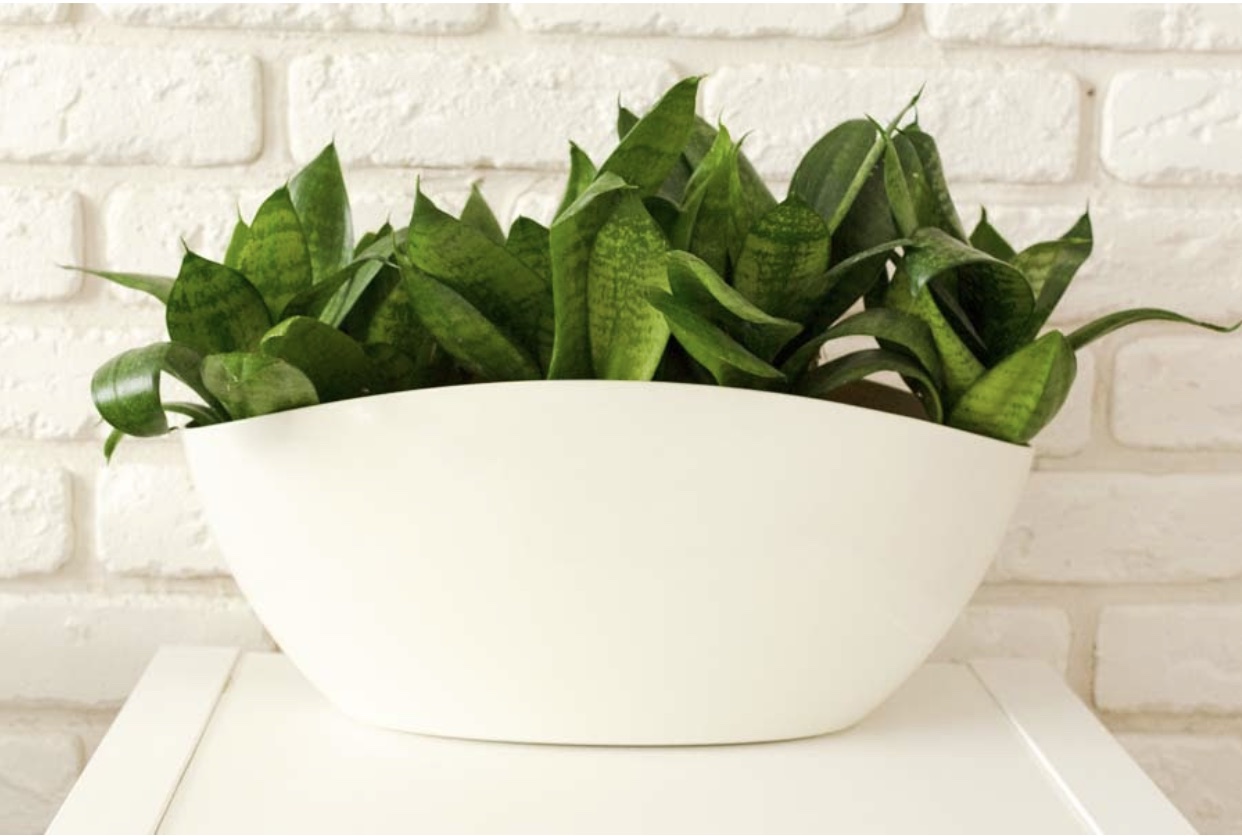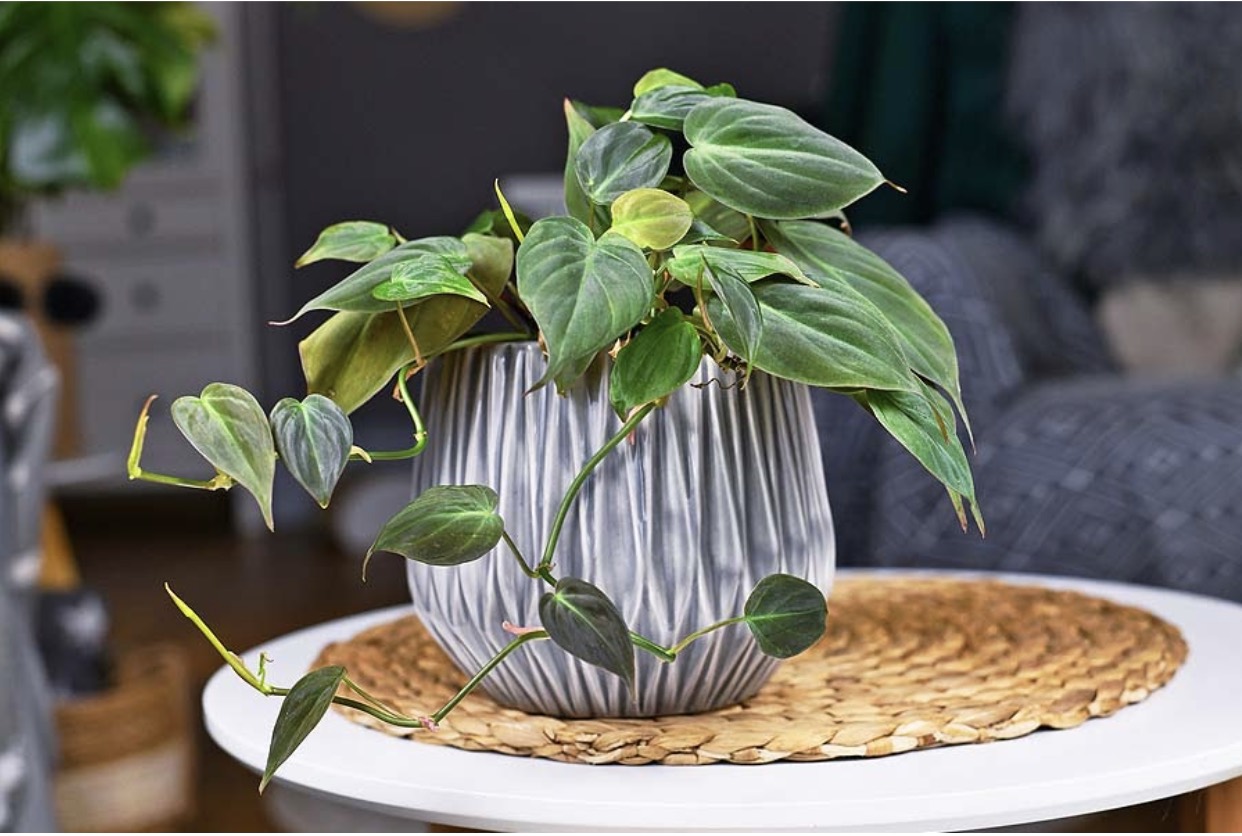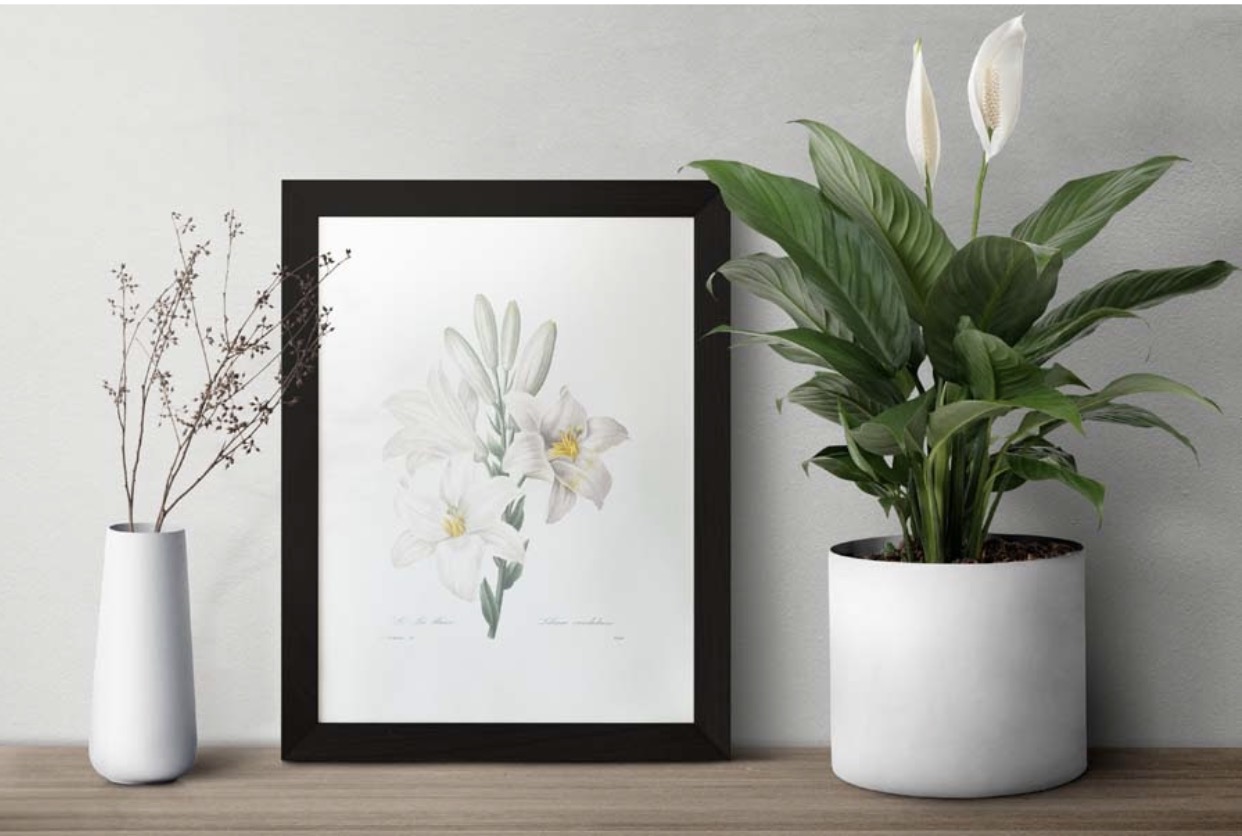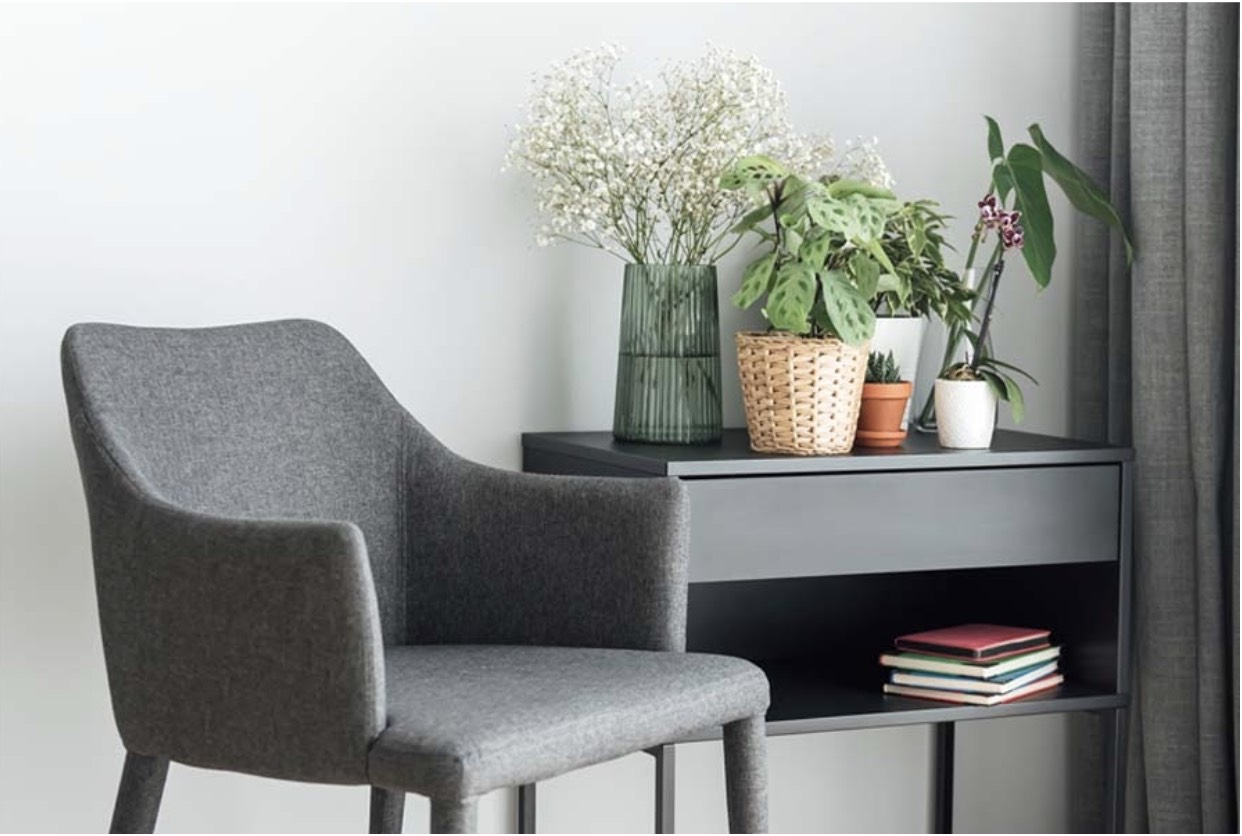
If you allow it, the presence of a house plant — one that you care for and one that cares for you — will change your life. Similar to a pet, plants need love, attention, and sometimes much more. Quiet and delicate little specimens, getting your plant to bloom (or generally survive a changing season) is a fulfilling endeavor bound to pump you full of confidence. If you can get a Ponytail Palm vibrant and lush, what else can you do?
11 Of The Best House Plants in the World:
- Syngonium White Butterfly
- Mini Monstera
- Monstera Deliciosa
- Dracaena Massangeana
- Aloe Vera Plant
- Ponytail Palm
- Money Tree – Guiana Chestnut
- Curly Spider Plant
- Snake Plant: Sansevieria Robusta
- Philodendron Cordatum
- White Anthurium
These house plant selections represent just a small portion of all the amazing plants around. There are at least 80 different species of houseplants, all with unique features that make them special. These plants are on this list for many reasons — continue reading to find out what indoor house plants we recommend for growers, new and experienced.
All of the wonderful house plants we reviewed and added to this list were provided to us by PlantedPot.com. Each plant arrived lush out of the package to our location via their delivery service.
Syngonium White Butterfly
Few plants are as beautiful and as elegant as the White Butterfly plant. The heart-shaped leaves are bolstered with white, cream-colored centers and dark green borders. There’s a reason so many consider this an eye-pleasing houseplant with a soothing aesthetic from its butterfly-shaped leaves and soft coloring. As the leaves of the White Butterfly grow older, they give the plant a varied and unique appearance. A mature White Butterfly plant can reach about 18-24″ in width and 18-24″ in height.
The Syngonium White Butterfly is also known as the Arrowhead Plant and gets its name from its peculiar leaves shaped like butterfly wings (or arrowheads, depending on who you ask). The vine-like White Butterfly can also be a climbing or trailing plant, making it a very versatile decor. Place it next to a pole and the plant will begin climbing, or place it on a shelf’s edge and watch the leaves drape over the sides of the pot. It adds a relaxed, natural feel indoors and can also be enjoyed outdoors during warmer weather on a shaded porch or patio.
Verdict: This classic houseplant is extremely easy to care for if looked after correctly, and it grows moderately fast. Watering is required a few times a week in the summer months and less when it’s cooler. A light weekly mist and monthly fertilizer will keep this butterfly afloat. Considering its care requirements are relatively simple and the stunning results, you won’t go wrong with this great plant for your home.
Mini Monstera
As a native of Southern Thailand and Malaysia, Monstera Minima are small, compact versions of the incredibly popular Monstera Deliciosa (a plant also featured on this list!). With quaint leaves that pop right out of the pot and are riddled with fenestrations as if they were the result of an art project, this plant is bound to catch some eyes.
Unlike most Monsteras, the Minima’s leaves show their slices and holes in their infancy. The Monstera Minima grows rapidly, bearing vines that extend 6 to 12 feet during a typical growing cycle.
Also known as the Philodendron Piccolo and Ginny Philodendron, the Monstera Minima isn’t a Monstera (if you couldn’t tell from the names, it is technically a Philodendron). The Minima is still a member of the Araceae family, and because of its appealing heart-shaped, fenestrated leaves, they are still lovingly referred to as Monsteras.
Since these plants have aerial roots, they can latch onto pretty much any object you place them near. Although most Monsteras may climb high — up 8 feet tall indoors with 2-foot-long leaves — happily commandeering your space if you let it, the Monstera Minima generally tops out around 5 feet tall, spreading just a couple feet horizontally. You might find this a lot more manageable in a smaller space with lower ceilings!
Verdict: If you’re interested in a more subtle, scaled-down version of a typically large and sprawling Monstera, you’re bound to love this plant. Minima are super easy to care for, especially if you have some working knowledge of caring for other Monsteras or plants in general.
Monstera Deliciosa
This plant goes by many names, only giving credence to its popularity. Known widely as the Swiss Cheese plant, Split-Leaf Philodendron, the fruit salad plant, the monster fruit, and many more, people love Monstera Deliciosa because of its eccentric growing style. This plant will take over any space it occupies with the right care. Growing up to 30 ft in height in the wild with 2 ft long leaves and long trails of vines, the Monstera Deliciosa is an imposing plant perfect for someone looking for some foliage to occupy a large living space. Luckily, you can better manage its size when you grow it indoors.
Its most famous pseudonym is the Swiss Cheese Plant for its grated leaf ends and large fenestrated leaves. The leaves can grow so wide and heavy that the vines struggle to carry the leaves, so they typically hang against walls.
The origins of the Monstera Deliciosa are rooted in southern Mexico, but it has since expanded worldwide. Notable locations are on many of the lushest tropical islands the world offers, including Hawaii, Seychelles, Ascension Island, and the Society Islands in French Polynesia. The Deliciosa has seen great success as a houseplant, with fans all over the world.
The Monstera Deliciosa can also bear fruit! The fruit itself resembles an ear of corn covered with hexagonal shapes. These interesting squares fall off as the fruit ripens, releasing an intense pineapple scent. Unfortunately, the fruits typically only grow in ideal rainforest conditions and are unlikely to grow indoors.
Verdict: Few plants are as expressive as the Monstera Deliciosa. Translating to the “delicious monster,” this plant is exactly that. With an impressive growth trajectory that’ll pack your home or office with a stunning centerpiece, this plant is ready to be the natural trophy piece of your household.
Dracaena Massangeana
Hailing from Africa’s hot and moist regions in Upper New Guinea, the Dracaena Massangeana, also known as the indoor cane corn plant, is a small shrub with long, vertical trunks that grow fragrant leaf ends.
The Dracaena genus bears nearly 40 different species of plants of this kind, most reaching up to around 10 ft in height. But when grown indoors, expect these plants to grow just a few feet tall, bearing small sword-like leaves with a glossy glow. This plant is perfect for homes or offices looking to add a tropical twist to their decor.
The Dracaena species excrete a reddish goo in its stems that, for centuries, was used for all kinds of medicinal purposes like toothpaste, dye, a cure for dysentery, and a go-to pain reliever for certain tribes. Today, this gum-like substance is a key component of wood varnish.
Stemming from dry African deserts and humid rainforests, keep these plants in a well-lit, humid environment. More so, try placing pebbles around the base of the plant; this will increase humidity and water filtration. Because of their desert origins, these plants require less watering than most plants. Though, consider misting these plants, as the leaves love constant precipitation. While the Dracaena can survive in both low and medium light, we recommend placing this plant in a well-shaded area indoors.
Verdict: The Dracaena Massangeana plant is far harder to pronounce than it is to take care of. While misting introduces a new aspect of plant care that may be hard to adjust to for some, it shouldn’t deter you from trying. Its glossy leaves, rich scent, and low maintenance make this plant worth going the extra mile for.
Aloe Vera Plant
The Aloe Vera plant is a classic succulent and mainstay in home gardens around the world. When you think of a succulent, you’re typically going to imagine the spindly, plump leaves of the Aloe Vera plant. These leaves absorb plenty of moisture, meaning the plant doesn’t need plenty of watering.
The origins of the Aloe Vera date far into the past. Cultures from China and Sumeria dating back to 3000 B.C. — the times of pharaohs and Egyptians — praised the Aloe Vera for its medicinal properties. They even called it “the plant of immortality.”
Many botanists agree the hot and dense deserts of the northern Arabian peninsula are where these plants blossom best. Because of its durability, Aloe Vera is incredibly popular in the coastal regions of the United States.
However, there’s more to Aloe Vera than just its attractive physical features and hardiness. The gooey gel inside the plump leaves is brimming with medicinal properties that gently cleanse and soothe the skin and help with gut health when ingested. If you’re a health nut or enjoy the looks of this plant, this succulent is for you.
These plants grow best near a sunny window for 6 hours of bright indirect sunlight. Don’t give it direct bright light under the full sun — it may burn the leaves of your plants. Expect these beautiful specimens to thrive with weekly or biweekly waterings and well-draining soil. Make sure to maintain moisture within the soil, but don’t flood or overwater your plant! With adequate care, expect these plants to grow up to 40 inches in height!
Verdict: The Aloe Vera plant is perfect for anyone looking to start their growing journey with ease. Its thick leaves and low maintenance are an excellent balance, sure to give you all the fulfillment growing a plant might bring without any of the unnecessary hassles.
Ponytail Palm
The name may sound like the Palm Tree and they may have similar appearances to ferns, but the Palm Ponytail is actually a succulent! That means it can tolerate direct sunlight or be placed in low-light settings and do just fine. And even if you forget to water it now and then, it will still thrive.
The most surprising features that make up the Ponytail Palm don’t align with what most people associate with succulents — thick, plump leaves that hold a lot of water. Instead, the Palm Ponytail comes with a strong trunk that stores water and sprouts long, thin leaves that look like the end of a broom after a thorough sweep around the house.
Something the Ponytail Palm does share with most succulents, though, is its durability. To properly manage this plant, allow the soil to dry out before watering, then place it in bright light to recreate the desert vibe this plant is accustomed to. Stemming from the deserts of Mexico, Belize and Guatemala, this plant loves the hot and dry climates. By consistently keeping the plant in similar conditions, you can expect this succulent to grow up to 6 feet in height in under a year.
Verdict: The Ponytail Palm plant is a great plant for growers of all experience levels. Since it’s a succulent, it’s pretty easy successfully grow. There’s no need to worry about strenuous watering cycles or perfectly crafted soils; this plant can grow just fine in most conditions. Because of its durability, the Ponytail Palm makes a beautiful houseplant. Stick a bundle of these fern-like leaves that sprout out of a thick, tree-like stalk on a desk, bookshelf, or side table for a stunning addition to your home.
Money Tree: Guiana Chestnut
Don’t you wish money grew on trees? Who doesn’t? It’s hard to quantify the value of growing a plant, but if you’re passionate about botany, the love and attention you put into the growing process just might be returned back to you one day.
The Money Plant, also known as the Guiana Chestnut, originates from Central and South America. It can climb up to 30 feet in height in the wild, making its free-spirited growth all the more riveting and exciting. Luckily, it typically only grows to about 8 feet tall when grown indoors. It’s also one of the fastest-growing plants in the world, sometimes growing upwards of 24 inches a year! You can even try growing this plant as a bonsai (a miniature version of itself!)
The unique pattern in the stocky center trunk of this plant adds to its visually stunning appearance. Place it in your office, porch, or garden — preferably somewhere slightly humid with a temperature ranging between 65-80°F.
The most important part is to give it a deep soak just a few times a month and let the magic happen. The soil should stay moist while it grows, but be careful not to overwater it! In no time, your Money Tree will be growing out of your office and filling your yard with shade.
Verdict: The Money Tree might not make you rich financially, but it can enrich so many other aspects of your life. From its unique, twisted base to the gorgeous tropical leaves, you can easily brighten up your living space with this plant. More so, caring for this plant is super easy. For growers new and old, you can’t go wrong with the Money Tree!
Curly Spider Plant
Spider Plants are easily cared for because of their tolerance to many lighting requirements and watering cycles. Native to the tropical coastlines of South Africa, these plants have small white flowers (often called plantlets) that grow on the tips of the stems. These baby buds allow for easy propagation and contribute to new plant growth.
If you want to start a little curly-headed Spider Plant family, propagation is the way to go. Chop off parts of the baby spider plant, and then put the spider plantlet in water for a few weeks to grow some roots, and then pot the rooted plantlet in the soil.
To properly care for this plant, follow these simple watering requirements: water every other week or so in the winter and every week to two weeks in spring and summer. These plants tolerate drying out and grow just fine. Another cool aspect of growing this plant is it’s pet-friendly! It’s not toxic, so there’s no need to worry about placing this plant near curious pets or children.
Verdict: Spider Plants should be your go-to if you’re looking to grow something stress-free, beautiful, and fun. The curly iterations of the Spider Plant have all the same care requirements as many of the other plants of the Spider family, just with an uncanny twist that’s sure to add some spice to your living space or garden.
Snake Plant: Sansevieria Robusta
Snake Plants have it all — they’re both beautiful and resilient. They immediately make an impact as soon as they enter your home. Their leaves ripple and sprawl in every direction, meeting at the base like a vortex. Place the Snake Plant on a window sill, desk, side-table, or nightstand and watch people become drawn to its presence.
The pointy leaves on Snake Plants make for an interesting ripple effect, resembling a cyclone of attractive, beautiful foliage. The leaves themselves are durable and stand tall no matter what environments it grows in.
Like the Aloe Vera, the Snake Plant is a succulent, meaning it needs very little water to survive and, surprisingly, thrive. Their unique leaves will be just as lively in low as well as bright light. Avoid direct sunlight, as this may burn the leaves. Be mindful not to overwater your Snake Plant, as a generous watering about once every 10-14 days will suffice. Allow the soil to completely dry out before replenishing.
These plants adapt perfectly and add some aesthetic flavor to any environment. And because they’re succulents, they require minimal care and can easily fit into busy lifestyles. Growing plants can also help increase productivity and lower anxiety.
Verdict: With stiff, pointed leaves that grow straight up and a hypnotic green snakeskin pattern, Snake Plants are one of a kind. The Robusta plant is smaller in size and can fit perfectly on a desk or small window sill. The Laurintinii is the perfect mid-size addition for any home or cozy apartment.
Philodendron Cordatum
The Philodendron Cordatum (or Hederaceum if the last name wasn’t difficult enough to pronounce) is often the gold standard of the Philodendron species, representing all aspects of what makes this plant species special. The Cordatum is a trailing houseplant having proud heart-shaped leaves with a deep and warm emerald green hue that enthusiasts adore. And the best part: this plant is incredibly easy to grow, needing very little lighting and watering requirements.
The Cordatum species is native to Central America and the Caribbean. In its natural habitat, one may spot this plant sprawling up the tallest trees. Like almost all Philodendron plants, these heart-shaped leaves thrive in semi-consistent bright but indirect light (emphasis on indirect). Although this plant has these lighting suggestions, your Philodendron will adapt to most situations, including low lighting, tight spaces, and irregular waterings. Keep your eye on this plant and adjust your care for it over time.
Verdict: The pronounced heart-shaped leaves on the Philodendron should remind you to live a little more — something everybody needs more of. Their accessibility and subtle beauty make for a plant with tons of character, class, and confidence — again, characteristics anyone can aspire to a little more from time to time.
White Anthurium
Looking for a plant that’s classy, easy to care for, and a welcome addition to most indoor environments? The White Anthurium is that plant. This plant originates from the misty tropical rainforests of Colombia, Guatemala, and even the densely forested Brazilian Amazon. Plant people coin this plant the flamingo flower for its obscure shape and physical appearance. These eye-catching leaves that bolster white flower ends called spathes compliment the deep green vines on this plant.
The White Anthurium needs very little to thrive. These plants are quite durable too, able to withstand most temperaments and forms of management. The White Anthurium is super easy to grow and can endure most lighting and water levels, making it an excellent option for plant growers who don’t have green thumbs yet. It also adds some class to any room, office, or living space!
Verdict: What’s not to love about the White Anthurium? Its subtle colors are sure to add some gentle vibes to your decor. As a very mature-looking flower, impress your folks or future business partners with this plant as a gift. And because it’s so easy to care for, no need to worry about passing along an unmanageable plant.
Best House Plants FAQ
House plants add a touch of beauty to any home, coming in all different shapes, sizes, colors, and smells. Finding the perfect plant for your home can be challenging and require a little bit of patience, research, and some luck. Regardless of where you think you stand, below is a rundown of some of the most frequently asked questions new or prospective plant owners often wonder.
Why Own a House Plant?
Owning a houseplant is a lot like owning a pet (except it’s quiet and doesn’t move too much) – it’s a living, breathing being that you share your living spaces with. Plants are the silent observers, lingering over your every move, and quietly purifying your surrounding air from unwanted toxins.
Many young adults today are stuck in busy schedules with no time to care for a pet. Plants offer the perfect solution for people to nurture something without the added responsibilities and time of raising a pet. It’s the perfect way to inject some fun into your daily lives!
Amongst all the philosophical reasons to own a houseplant — instills discipline and patience in a person — there are many practical reasons for housing a plant indoors. Here are some of the reasons below:
Better Air Quality
Plants can absorb many of the harmful toxins and harsh chemicals in the air. We breathe in these toxins daily, which can sometimes cause headaches or migraines. By removing them, we can effectively cleanse the air of these harmful additives and breathe in fresh, clean air.
A bonus to better air and overall quality of life is that it boosts your immunity! Some plants will raise the humidity levels in your space by releasing moisture vapors that protect us from respiratory illnesses like dry coughs and sore throats.
Improves Overall Quality of life
Some studies show the inclusion of plants in a space helps lower heart rate, blood pressure, and respiratory problems. If your living space or office is a bit hectic, your plant will be there to ground you. Plants can help reduce stress, and even just a few plants around your house can help calm and relax you.
Sleeping Aid
Many indoor and outdoor plants, like Lavender, Jasmine, Aloe Vera, and Gardenia, omit incredibly soothing aromas that help lead to a night of better, deeper sleep.
Enhances the Ambiance in Your Home
Of course, a plant that is well maintained is a surefire way to enhance your living spaces. Whether they bloom or not, plants add a nice splash of color to any room. With a nice, well-kept plant, you should feel confident in your decor!
What Is The Difference Between Bright, Medium, And Low Light Plants?
Figuring out how much lighting your plant needs is incredibly important because it’ll affect how and where you grow it. Luckily your lighting ranges are simple: bright, medium, or low. Most of the plants on this list have pretty easy lighting requirements. Plants need light to photosynthesize and grow, but also too much light may overfeed and even burn your plant.
Some of the most resilient plants can survive direct sunlight, but most require 4-6 hours of indirect sunlight to thrive. Remember to check your plant’s lighting requirements and adjust their environments accordingly!
Here’s a brief rundown on types of plants and how to light them:
- Bright-Light Plants: Two plants on this list — the Aloe Vera Snake Plant — are among those that enjoy plenty of light. Whether your plant likes indirect or direct sunlight matters quite a bit as well. Some plants, under direct sunlight, can get sunburnt. The Aloe Vera Plant is a perfect example — avoid placing this plant under direct light.
- Medium-Light Plants: It’s recommended, though not totally necessary, that you store plants like your Philodendron somewhere in between direct and indirect lighting. Simply light these plants in an environment that is neutral, not too bright and not too dim.
- Low-Light Plants: Anthuriums are solid examples of plants that enjoy the shade. Low-light plants are great for beginners because they are typically super easy to care for. Many of the plants on this list would fall into this category!
How To Choose The Best Plants For Your Home?
These are a few things to consider before you select which plant to bring into your home. If you are uncertain about identifying these markers, it’s best to ask an expert. Your local nursery is bound to have folks with knowledge of all things plants. Or, if you plan to order your plants online from a store like plantedpot.com you can give their customer service a call regarding general plant questions. Fill them in on your needs, and they should be able to help you make the best choice possible.
To collect an idea of what you’re looking for when selecting your next plant, here’s a shortlist of things to consider:
- Check the underside of leaves for insects.
- Plants with yellow or brown foliage are signs the plant is stressed or not receiving the proper care. Don’t let this completely deter you from buying the plant, but consider the severity of the discoloration and check to see if the leaves are still salvageable.
- Make sure there’s a drainage hole in its pot. Good drainage is essential for most plants. However, you can easily find well-draining soil and well-draining pots to keep the plant healthy.
Where are you storing your plant? Before going out and purchasing a large Money Tree, be sure you have the space. Make sure you get an idea of where you’re going to place it so your plant will be suited for the optimal growing conditions (light, humidity, temperature) from the beginning.
Are There Ways to Tell If My House Plant Is Dying?
The best way to gauge if your plant is dying is by looking for signs of discoloration, insects, or lack of growth. Check to see if the flower or leaves are changing color or wilting. These may be signs that your plant is not getting enough light or water. In some cases, it may be getting too much sun, or you are overwatering the plant.
Be sure to regularly check for pests and insects living on the undersides of the leaves. Pests can chew through the plant, leaving behind an unattractive and dying plant.
How Do You Save a Dying House Plant?
Before you embark on the tall task of rescuing a dying plant, you should first consider if it’s possible and if it’s worth doing. Plants are specific, many of them have pretty loose requirements, but they’ll vocalize their discomfort far too quietly. Here are some key tips for saving your precious plant.
- Repot your plant – Your plant might be outgrowing your pot, meaning it’s time to repot to avoid rootbound plants. Mix up what kind of soil and potting mix you’re using upon second potting.
- Trim your plant – A well-trimmed plant will look cleaner and healthier. Trimming off dead parts of the plant will ensure the nutrients are directed towards the healthier, growing areas of the plant. When faced with damaged roots, trim back the leaves so your plant won’t have to work as hard to support the foliage.
- Move your plant – The position of your plant and the amount of sun they’re getting is sometimes an incredibly important facet of your plant growing success. Too much sun? The leaves will dry, creating burnt brittle leaves marred by the light and heat. Too little sun? The leaves will shrink, and the color will change to a duller, paler color. Make sure your plant is in the right spot for optimal growth.
- Water your plant – Water and lighting are your plant’s main sources of nutrients. If you’re improperly watering your plant, there’s a good chance that’s the reason it’s not growing but dying. Check if your leaves are brittle — this is typically a telltale sign your plant is dehydrated and needs some H2O. If your plant is being overwatered, the leaves will wilt, and the soil will rot and start to mold. Adjust your watering cycle until you find a solution.
- Monitor your plant for pests – No plant thrives when insects are invading them. If you find pests on your plant, you can wipe down the leaves with a damp cloth or a mild, plant-safe soap solution.
What Is The Average Lifespan Of A Plant?
Depending on how you store the plant and how well you care for it, most potted plants thrive for about 2-5 years. However, with proper care, some plants can live much longer. Spider Plants, for example, can have a lifespan of 50+ years!
Conclusion
The problem with distinguishing the best plant is there is no right answer; the best plant is the one you love. Only you can decide that! Certain plants might be better for different plant growers with unique wants and needs regarding their indoor or outdoor plants.
After considering how well your future plant’s size, shape, and aesthetic may fit you and your living spaces, a good owner considers what growing that plant would look like. They imagine a future with them, one that requires some work, but they’re ready for it.
Do you want a more challenging plant to grow and maintain? One that’ll keep you busy for a long time? A Spider Plant might be best for you. Or how about a plant with very little to do to keep it thriving? Aloe Vera, Ponytail Palm, or Snake Plant are all excellent options.
Regardless of what plant you choose, prepare yourself for a hobby that’ll require a little research and a fair amount of attention. Let yourself get carried away by your beautiful plant and learn the best way to grow it. Botany has long-standing roots in the framework of our society — we wouldn’t be where we are today without it!
Advertising disclosure: We may receive compensation for some of the links in our stories. Thank you for supporting LA Weekly and our advertisers.

